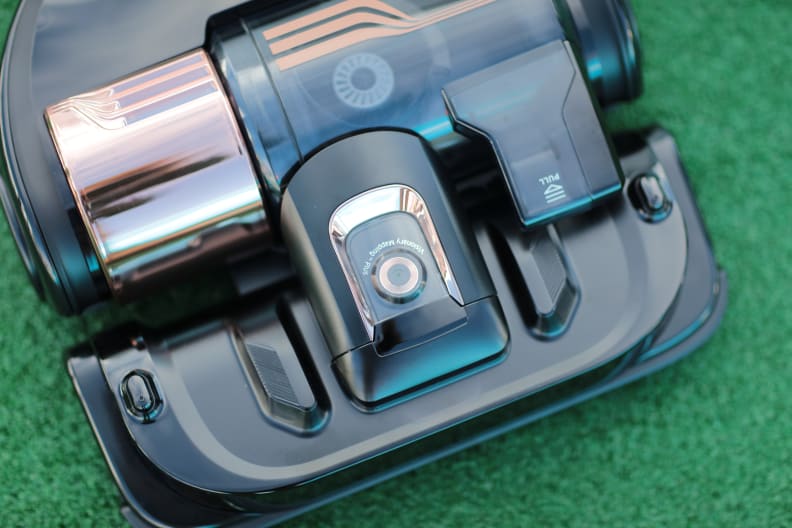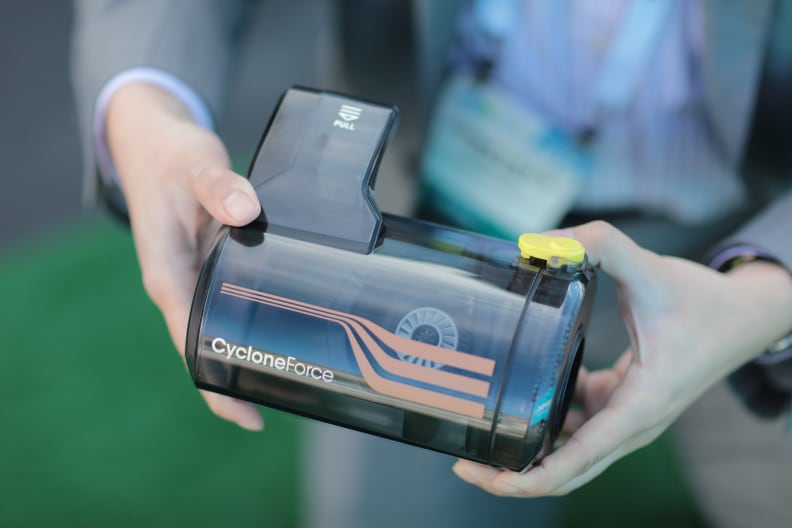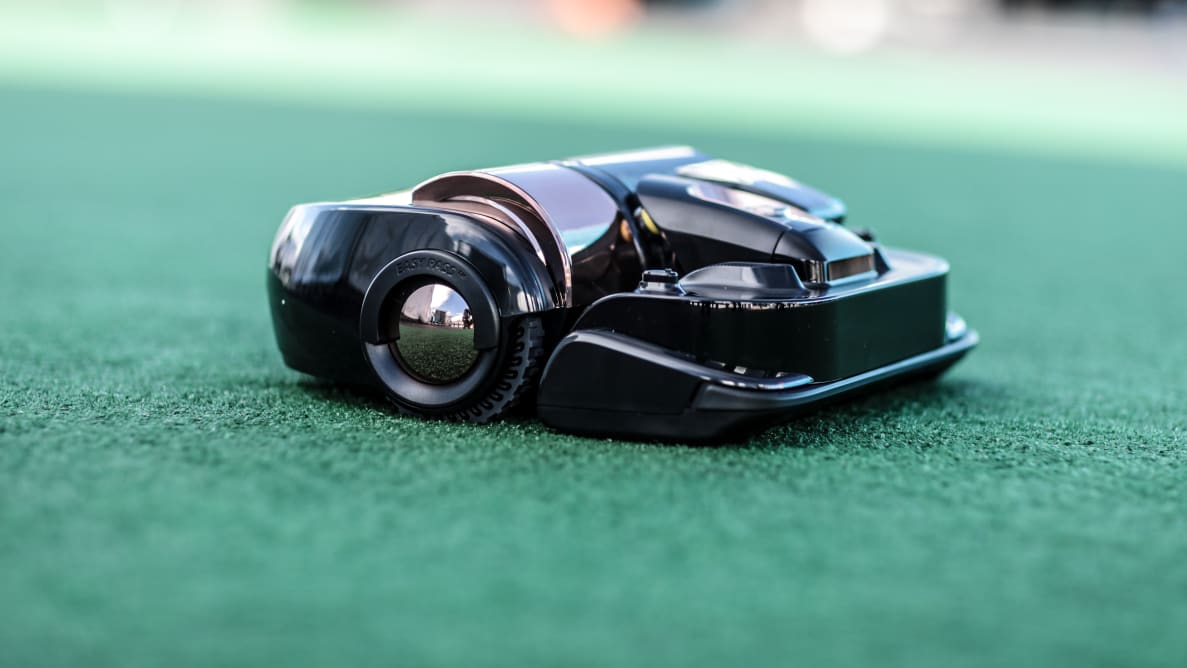That's great, but it doesn't tell the whole story. The VR9000's navigation and programming left a little to be desired. Because of that, the 9000 turned out to be a better vacuum than a robot. This time around, Samsung has made major advancements on the robotics front, making its latest PowerBot–the VR9350–a better automaton.

Visionary Mapping Plus maps your house by looking at your ceiling.
{{amazon name="Samsung VR9000 Powerbot Robotic Vacuum, Airborne Copper", asin="B00ZRJIOAM", align="right"}} At the forefront is the smart Visionary Mapping Plus technology. When you turn on the PowerBot for the first time, the upward-facing camera maps out an entire floor of your house by tracing your ceiling. Why the ceiling? Because furniture on the floor can shift around, but your ceiling isn't going to change much. The process takes a while, but this Samsung can to return to its dock, recharge, and continue on with its cartography. It doesn't matter how large your house is—the PowerBot can map it.
The real magic begins after the map is created. It's sent to your phone, and with the floor plan in hand, you can pick and choose what rooms the PowerBot cleans. For example, let's say you're at work and you get a text from your spouse saying guests are coming over soon. There's not enough time for the PowerBot to clean everything, so you select the living room, kitchen, and bathroom.
It's a time-saving measure that has no equal in the robot vacuum market.

The bin is large for a robot vacuum.
Physically, the VR9350 feels exactly like the VR9000. The unit itself is very heavy—more heavy duty than other brands, and more robust. We haven't measured it, but the dust bin looks like the 0.6-liter version the VR9000 had. Same goes for the Easy Pass wheels that allow the PowerBot to cross high thresholds.
We won't be able to tell how well the VR9350 cleans until we get it into our labs for review, but there are two features that may give this PowerBot a leg up in our rankings. The first is the shape of the brush head: straight and wide. This shape lets the PowerBot get right up against a wall, rather than leaving a three-inch moat like a round robot vacuum would do. (For the record, the highest-ranking robot vacuum we've reviewed also has a straight edge.)
The VR9350 also has a crevice clean feature. When the unit detects a divot in the floor, it increases suction to grab all the dirt hiding in the cracks. Whether by design or not, no floor is perfectly smooth, and vacuums without this feature can miss a lot of dirt. Remember: When you're using a regular vacuum, you often have to go over uneven spots a few times to get all the dirt. The PowerBot is designed to do it in one pass.
{{ photo_gallery name="Samsug PowerBot" }}
When robot vacuums first came out, you turned them on and ran away. Sometimes you had to move furniture to keep robot from getting caught or ramming them to death. The PowerBot VR9350 is a shinning example of the new age of automated cleaning. It works around your life and is programmable to your needs.
Pricing for the VR9350 hasn't been announced yet, but its predecessor debuted for well over $1,000. You can probably expect the same from the new and improved model.
Related Video
{{brightcove '4142393913001'}}
Meet the tester
Jonathan Chan currently serves as the Lab Manager at Reviewed. If you clean with it, it's likely that Jon oversees its testing. Since joining the Reviewed in 2012, Jon has helped launch the company's efforts in reviewing laptops, vacuums, and outdoor gear. He thinks he's a pretty big deal. In the pursuit of data, he's plunged his hands into freezing cold water, consented to be literally dragged through the mud, and watched paint dry. Jon demands you have a nice day.
Checking our work.
Our team is here to help you buy the best stuff and love what you own. Our writers, editors, and experts obsess over the products we cover to make sure you're confident and satisfied. Have a different opinion about something we recommend? Email us and we'll compare notes.
Shoot us an email



